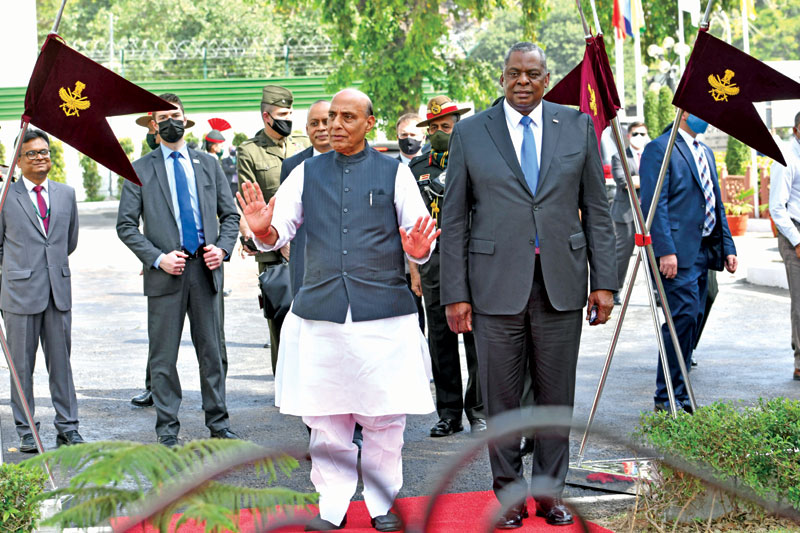As the US withdraws from Afghanistan, India needs to brace for new realities
 Ajay Singh
Ajay Singh
On 11 September 2001, the planes crashed into the twin towers. On 26 September–just fifteen days later–a team of CIA operatives dropped into the Panjshir Valley in Afghanistan. They were the first troops of the US military operation that would eventually go on for the next two decades in America’s longest and most expensive war, which saw over 120,000 US troops deployed at its peak (plus an additional 25,000 NATO troops), cost over USD2 Trillion, and claimed over 7,000 lives–not counting 1,57,000 Afghan civilians who perished in the violence.
Now, President Joe Biden has finally called quits on what he calls, ‘The Forever War’. He has promised to get all US troops back by 9/11/21–a symbolic date. This means that the 2,500 US troops presently there will move back. The NATO force of around 8,000 will leave as well. So will the gunships and aircraft that provided much-needed fire support to the Afghan security forces. 18,000 contractors, who provide logistics and maintenance services will also depart. Remaining would be some intelligence personnel, a platoon or so to guard their embassy and a handful of drones to assist the Afghan security forces. The departure was anticipated, but it will leave a void that will create even further instability in Afghanistan and leave it ripe for the picking by an increasingly assertive Taliban.
The US Withdrawal
President Biden had inherited a Peace Deal which Trump had made with the Taliban which agreed to a complete US withdrawal by May 1. The withdrawal was conditional to the Taliban entering talks with the Afghan government ‘for a permanent and comprehensive ceasefire,’ and promising not to allow al Qaeda or any other group from sheltering in Afghanistan. Biden’s announcement has no such conditionalities. It merely claims that the objectives for the initial invasion have been met and the troops are now required to counter emerging threats elsewhere–especially in the Indo-Pacific. In other words, they have declared victory and scooted.
Yet, this withdrawal is nothing more than a defeat. It is an acknowledgment that after 20 years, the US have handed Afghanistan back to the Taliban. With the US withdrawal, Afghanistan lies open to them. The Taliban are now stronger than they have ever been since 2001. They are in complete control of 76 districts–over 30 per cent of Afghanistan’s area–and are fast closing in on the cities. They view the US withdrawal as a victory and now have no incentive for peace talks or for any concessions whatsoever.
They have even claimed that the US has violated the terms of initial peace agreement by postponing the withdrawal to September, rather than May as had been agreed upon. Hence, they would no longer be accountable to any of its conditions. (i.e., they can fire upon withdrawing US troops). They have refused to attend the peace conference planned in May, and have shown no inclination for any kind of talks with the Afghan government. Their actions are that of a triumphant force which does not bode well for Afghanistan.

Implications on Afghanistan
The universal consensus is that once the US troops withdraw, the Afghan security forces–devoid of their intelligence and firepower–will be simply unable to withstand the Taliban. A sustained offensive could come as early as Autumn 2021, or maybe around Spring 2022. But come it will. They could just storm into Kabul as they did in 1996 and then re-establish the Islamic Emirates of Afghanistan.
The promised peace talks with the government are unlikely to take place. They are in no mood to talk and announced, ‘The Islamic Emirates will not relent on complete independence and re-establishment of a pure Islamic system, following the complete end of the occupation.’ In other words, there will be no concessions whatsoever.
Their intransigence poses the greatest concerns. Should they come into power, there are fears that Afghanistan could slip back into medieval anarchy. Women would be at greatest risk. The Taliban banned women from education and holding jobs–even prohibited their movement, unless accompanied by a male member. The minorities–especially the Shia Hazaras who were massacred during their earlier rule–are also at risk. Perhaps, the Taliban have mellowed in the past 20 years but their actions do not indicate any change in mindset. At most, the only concession they would make is to prevent groups like al Qaeda from operating from their soil–but that too would be prompted by the power struggle between the two groups–and not any altruistic motives.
The stark reality is that the Taliban are likely to be back in power after the US withdrawal. And that will be a complete game-changer for the region and for India.
India and Pakistan
India is now at a crucial tipping point in its Afghan policy. For two decades, India was fortunate to have a democratically-elected government in Kabul which was warmly disposed towards it. The return of the Taliban will require a complete revamping of ties. India have never had good ties with the Taliban and their role in the hijacking of IC-814 to Kandahar still rankles. Yet, over the past year or so New Delhi has been establishing contact with the Taliban, so that our communication lines are open.
India always believed in a ‘Afghan led and Afghan owned’ solution which hinged in having a democratically-elected government in Kabul. We have developed a large reservoir of good-will by the making of Afghan Parliament Building, the development of Kabul’s electricity grid, the Zaranj-Delaram road and many other infrastructure projects. Yet, it is unfortunate that we have only been on the fringes of all initiatives and our strategic influence in Afghanistan is minimal. Our influence, and the very symbols of our presence are at risk should the Taliban come to power. Yet, we must continue to bolster up Ghani’s beleaguered regime and at the same time form some sort of working relationship with the Taliban.
For Pakistan, it is a moment of vindication. They had provided sanctuary to the Taliban even while joining the US in its ‘War against Terror’ and their policy of hunting with the hounds and running with the hares seems to have paid off. The Taliban High Council has operated for two decades from Quetta and they have well-knit ties with the leadership. A Taliban regime suits Pakistan’s quest for ‘strategic depth’ and they would use it to ease out our own influence and deny us much needed connectivity to Central Asia. Worse, they could use their Islamic credentials to raise the Kashmir issue. The Haqqani group, fostered by the ISI, is a major player and it has strong ties with the Lashkar-e-Taiyyaba and Jaish-e-Mohammed. Should they fan the flames, there could well be an influx of Afghan fighters into the Valley as was seen in the early 90s. That would add another dimension to the Kashmir problem.
But Pakistan will be wary of the fact that the turbulence in Afghanistan could spill over to their soil. The hardline brand of Islam of the Taliban could find resonance within Pakistan, which could lead to a spurt of Islamic terrorism there. The instability of Afghanistan could spill over across the Durand Line.

China, Russia and Iran
President Biden stated that they have shifted focus from Afghanistan to ‘emerging threats in the Indo-Pacific.’ The threat he referred to, without naming it, was China. But then, a US withdrawal will enable China to move into this vacant strategic space and the ceding of US influence in Afghanistan will affect the balance of power in the Indo-Pacific. Plus, the US withdrawal would send a disconcerting message to the very allies it hopes to develop in the region.
Afghanistan’s strategic location provides a lucrative position for China to expand its influence. China has been slowly testing the waters there and is now a major player in the peace process–along with Russia and Iran. Using its immense economic clout, it can shore up whatever government is there in post-withdrawal Afghanistan. The extension of CPEC into Afghanistan and thence to Iran and Central Asia also fits in with its long-term plans. And China too will have interest in easing out Indian influence there.
But they too would be wary of the fact that should the Taliban choose to establish themselves as champions of radical Islam, they could be singed in Xinjiang. They would thus deal with them through the proxy of Pakistan and deflect attention from themselves.
Russia too seeks to reestablish itself and is already in the forefront of many peace initiatives for Afghanistan. Unfortunately, most of the proposed initiatives–including those by the USA–seem to sideline the legitimate government and approach it largely from the Taliban perspective. It is an indicator of the way the wind is blowing.
Other nations in the region too will be viewing the US withdrawal with interest. Iran, especially has developed warm ties with the Taliban (though it views its anti-Shia-ism with concern). Turkey, Saudi, UAE and Qatar too are perhaps catering for a contingency where post-withdrawal Afghanistan could become the self-proclaimed center of hardline Islam–which would affect them all directly.
The trend that emerges is that most nations have accepted the possibility of chaos in Afghanistan following the US withdrawal and the strong likelihood of the Taliban returning to power. India too has to prepare for the contingency. So, while we should continue to support President Ghani, we should open our communication lines with the Taliban and establish our own relationship with them. The US presence helped safeguard our interests there, but we have to be prepared for the post-withdrawal period now. That phase may bring greater instability, not just in Afghanistan but in the entire region. Our diplomacy will have to be nimble to keep pace with the events unfolding there and ensure that our interests are preserved in this vital area of our neighborhood.
(The is the author of four books, including the bestsellers, ‘Through Orphaned Eyes’ and ‘India’s Battlefields: From Kurukshetra to Balakot’)

